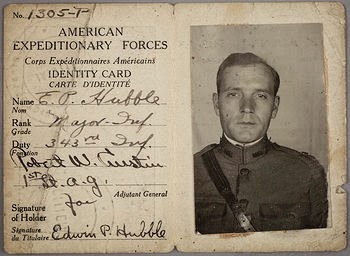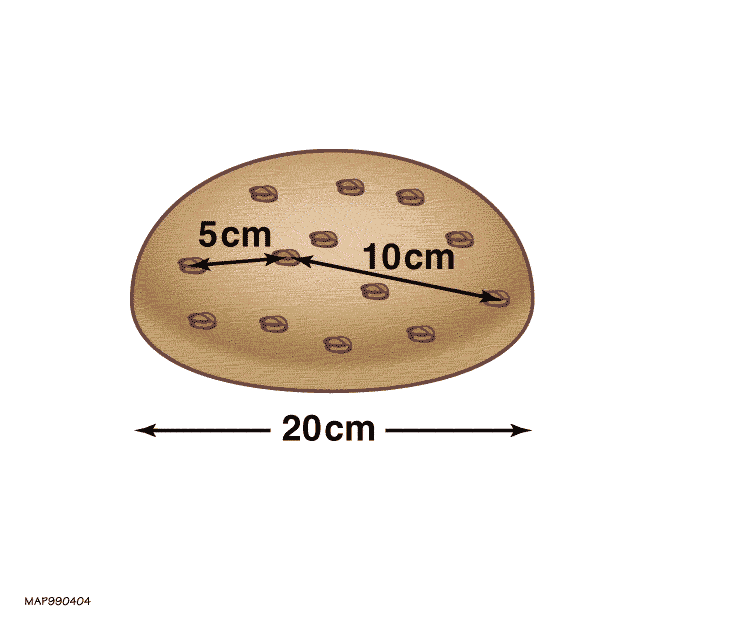|
Friedmann–Einstein Universe
The Friedmann–Einstein universe is a model of the universe published by Albert Einstein in 1931. The model is of historic significance as the first scientific publication in which Einstein embraced the possibility of a cosmos of time-varying radius. Description Interpreting Edwin Hubble's discovery of a linear relation between the redshifts of the galaxies and their radial distance as evidence for an expanding universe, Einstein abandoned his earlier static model of the universe and embraced the dynamic cosmology of Alexander Friedmann. Removing the cosmological constant term from the Friedmann equations on the grounds that it was both unsatisfactory and unnecessary, Einstein arrived at a model of a universe that expands and then contracts, a model that was later denoted the Friedmann–Einstein model of the universe. In the model, Einstein derived simple expressions relating the density of matter, the radius of the universe and the timespan of the expansion to the Hubble constant ... [...More Info...] [...Related Items...] OR: [Wikipedia] [Google] [Baidu] |
Albert Einstein
Albert Einstein (14 March 187918 April 1955) was a German-born theoretical physicist who is best known for developing the theory of relativity. Einstein also made important contributions to quantum mechanics. His mass–energy equivalence formula , which arises from special relativity, has been called "the world's most famous equation". He received the 1921 Nobel Prize in Physics for . Born in the German Empire, Einstein moved to Switzerland in 1895, forsaking his German citizenship (as a subject of the Kingdom of Württemberg) the following year. In 1897, at the age of seventeen, he enrolled in the mathematics and physics teaching diploma program at the Swiss ETH Zurich, federal polytechnic school in Zurich, graduating in 1900. He acquired Swiss citizenship a year later, which he kept for the rest of his life, and afterwards secured a permanent position at the Swiss Patent Office in Bern. In 1905, he submitted a successful PhD dissertation to the University of Zurich. In 19 ... [...More Info...] [...Related Items...] OR: [Wikipedia] [Google] [Baidu] |
Edwin Hubble
Edwin Powell Hubble (November 20, 1889 – September 28, 1953) was an American astronomer. He played a crucial role in establishing the fields of extragalactic astronomy and observational cosmology. Hubble proved that many objects previously thought to be clouds of dust and gas and classified as "nebulae" were actually Galaxy, galaxies beyond the Milky Way. He used the strong direct period-luminosity relation, relationship between a classical Cepheid variable's luminosity and periodic function, pulsation period (discovered in 1908 by Henrietta Swan Leavitt) for scaling cosmic distance ladder, galactic and extragalactic distances. Hubble confirmed in 1929 that the recessional velocity of a galaxy increases with its distance from Earth, a behavior that became known as Hubble's law, although it had been proposed two years earlier by Georges Lemaître. The Hubble law implies that the universe is expanding. A decade before, the American astronomer Vesto Slipher had provided the fi ... [...More Info...] [...Related Items...] OR: [Wikipedia] [Google] [Baidu] |
Alexander Friedmann
Alexander Alexandrovich Friedmann (also spelled Friedman or Fridman; ; ; – September 16, 1925) was a Russian and Soviet physicist and mathematician. He originated the pioneering theory that the universe is expanding, governed by a set of equations he developed known as the Friedmann equations. Early life Alexander Friedmann was born to the composer and ballet dancer Alexander Friedmann (who was a son of a baptized Jewish cantonist) and the pianist Ludmila Ignatievna Voyachek (who was a daughter of the Czech composer Hynek Vojáček). Friedmann was baptized into the Russian Orthodox Church as an infant, and lived much of his life in Saint Petersburg. Friedmann obtained his degree from St. Petersburg State University in 1910, and became a lecturer at Saint Petersburg Mining Institute. From his school days, Friedmann found a lifelong companion in Jacob Tamarkin, who was also a distinguished mathematician. World War I Friedmann fought in World War I on behalf of Imperial R ... [...More Info...] [...Related Items...] OR: [Wikipedia] [Google] [Baidu] |
Cosmological Constant
In cosmology, the cosmological constant (usually denoted by the Greek capital letter lambda: ), alternatively called Einstein's cosmological constant, is a coefficient that Albert Einstein initially added to his field equations of general relativity. He later removed it; however, much later it was revived to express the energy density of space, or vacuum energy, that arises in quantum mechanics. It is closely associated with the concept of dark energy. Einstein introduced the constant in 1917. to counterbalance the effect of gravity and achieve a static universe, which was then assumed. Einstein's cosmological constant was abandoned after Edwin Hubble confirmed that the universe was expanding. From the 1930s until the late 1990s, most physicists agreed with Einstein's choice of setting the cosmological constant to zero. That changed with the discovery in 1998 that the expansion of the universe is accelerating, implying that the cosmological constant may have a positive valu ... [...More Info...] [...Related Items...] OR: [Wikipedia] [Google] [Baidu] |
Friedmann Equations
The Friedmann equations, also known as the Friedmann–Lemaître (FL) equations, are a set of equations in physical cosmology that govern cosmic expansion in homogeneous and isotropic models of the universe within the context of general relativity. They were first derived by Alexander Friedmann in 1922 from Einstein's field equations of gravitation for the Friedmann–Lemaître–Robertson–Walker metric and a perfect fluid with a given mass density and pressure . (English translation: ). The original Russian manuscript of this paper is preserved in thEhrenfest archive The equations for negative spatial curvature were given by Friedmann in 1924. (English translation: ) The physical models built on the Friedmann equations are called FRW or FLRW models and from the ''Standard Model'' of modern cosmology, although such a description is also associated with the further developed Lambda-CDM model. The FLRW model was developed independently by the named authors in the 1920s and ... [...More Info...] [...Related Items...] OR: [Wikipedia] [Google] [Baidu] |
Hubble Constant
Hubble's law, also known as the Hubble–Lemaître law, is the observation in physical cosmology that galaxies are moving away from Earth at speeds proportional to their distance. In other words, the farther a galaxy is from the Earth, the faster it moves away. A galaxy's recessional velocity is typically determined by measuring its redshift, a shift in the frequency of light emitted by the galaxy. The discovery of Hubble's law is attributed to work published by Edwin Hubble in 1929, but the notion of the universe expanding at a calculable rate was first derived from general relativity equations in 1922 by Alexander Friedmann. The Friedmann equations showed the universe might be expanding, and presented the expansion speed if that were the case. Before Hubble, astronomer Carl Wilhelm Wirtz had, in 1922 and 1924, deduced with his own data that galaxies that appeared smaller and dimmer had larger redshifts and thus that more distant galaxies recede faster from the observer. In ... [...More Info...] [...Related Items...] OR: [Wikipedia] [Google] [Baidu] |
Oxford University
The University of Oxford is a collegiate research university in Oxford, England. There is evidence of teaching as early as 1096, making it the oldest university in the English-speaking world and the second-oldest continuously operating university globally. It expanded rapidly from 1167, when Henry II prohibited English students from attending the University of Paris. When disputes erupted between students and the Oxford townspeople, some Oxford academics fled northeast to Cambridge, where they established the University of Cambridge in 1209. The two English ancient universities share many common features and are jointly referred to as ''Oxbridge''. The University of Oxford comprises 43 constituent colleges, consisting of 36 semi-autonomous colleges, four permanent private halls and three societies (colleges that are departments of the university, without their own royal charter). and a range of academic departments that are organised into four divisions. Each college ... [...More Info...] [...Related Items...] OR: [Wikipedia] [Google] [Baidu] |
Einstein's Blackboard
Einstein's Blackboard is a blackboard which physicist Albert Einstein (1879–1955) used on 16 May 1931 during his lectures while visiting the University of Oxford in England. The blackboard is in the collection of the History of Science Museum in Oxford. The equations in the blackboard are related to the cosmological model known as Friedmann–Einstein universe. Overview The lecture in which the blackboard was used was the second of three, delivered at Rhodes House in South Parks Road. Einstein's visit to give the Rhodes Lectures, and also to receive an honorary Doctor of Science degree from Oxford University on 23 May 1931, was hosted by the physicist Frederick Lindemann. Einstein's first lecture was on relativity, the second on cosmology, and the third on unified field theory. All the lectures were delivered in German. A brief report of the second lecture was given in ''The Times'' and in ''Nature''. A summary of all three lectures can be found in the Archives of the Oxford ... [...More Info...] [...Related Items...] OR: [Wikipedia] [Google] [Baidu] |
Museum Of The History Of Science, Oxford
The History of Science Museum in Broad Street, Oxford, Broad Street, Oxford, England, holds a leading collection of scientific instruments from Science in the Middle Ages, Middle Ages to the 19th century. The museum building is also known as the Old Ashmolean Building to distinguish it from the newer Ashmolean Museum building completed in 1894. The museum was built in 1683, and it is the world's oldest surviving purpose-built museum. History Built in 1683 to house Elias Ashmole's collection, the building was the world's first purpose-built museum building and was also open to the public. The original concept of the museum was to institutionalize the new learning about nature that appeared in the 17th century and experiments concerning natural philosophy were undertaken in a Laboratory, chemical laboratory in the basement, while lectures and demonstration took place in the School of Natural History, on the middle floor. Ashmole's collection was expanded to include a broad range of ... [...More Info...] [...Related Items...] OR: [Wikipedia] [Google] [Baidu] |
Einstein's Blackboard
Einstein's Blackboard is a blackboard which physicist Albert Einstein (1879–1955) used on 16 May 1931 during his lectures while visiting the University of Oxford in England. The blackboard is in the collection of the History of Science Museum in Oxford. The equations in the blackboard are related to the cosmological model known as Friedmann–Einstein universe. Overview The lecture in which the blackboard was used was the second of three, delivered at Rhodes House in South Parks Road. Einstein's visit to give the Rhodes Lectures, and also to receive an honorary Doctor of Science degree from Oxford University on 23 May 1931, was hosted by the physicist Frederick Lindemann. Einstein's first lecture was on relativity, the second on cosmology, and the third on unified field theory. All the lectures were delivered in German. A brief report of the second lecture was given in ''The Times'' and in ''Nature''. A summary of all three lectures can be found in the Archives of the Oxford ... [...More Info...] [...Related Items...] OR: [Wikipedia] [Google] [Baidu] |
Einstein–de Sitter Universe
The Einstein–de Sitter universe is a model of the universe proposed by Albert Einstein and Willem de Sitter in 1932. On first learning of Edwin Hubble's discovery of a linear relation between the redshift of the galaxies and their distance, Einstein set the cosmological constant to zero in the Friedmann equations, resulting in a model of the expanding universe known as the Friedmann–Einstein universe. In 1932, Einstein and De Sitter proposed an even simpler cosmic model by assuming a vanishing spatial curvature as well as a vanishing cosmological constant. In modern parlance, the Einstein–de Sitter universe can be described as a cosmological model for a flat matter-only Friedmann–Lemaître–Robertson–Walker metric (FLRW) universe. Lars Bergström & Ariel Goobar: "''Cosmology and Particle Astrophysics''", 2nd ed. Springer (2004), p. 70+77. . In the model, Einstein and de Sitter derived a simple relation between the average density of matter in the universe and its exp ... [...More Info...] [...Related Items...] OR: [Wikipedia] [Google] [Baidu] |





